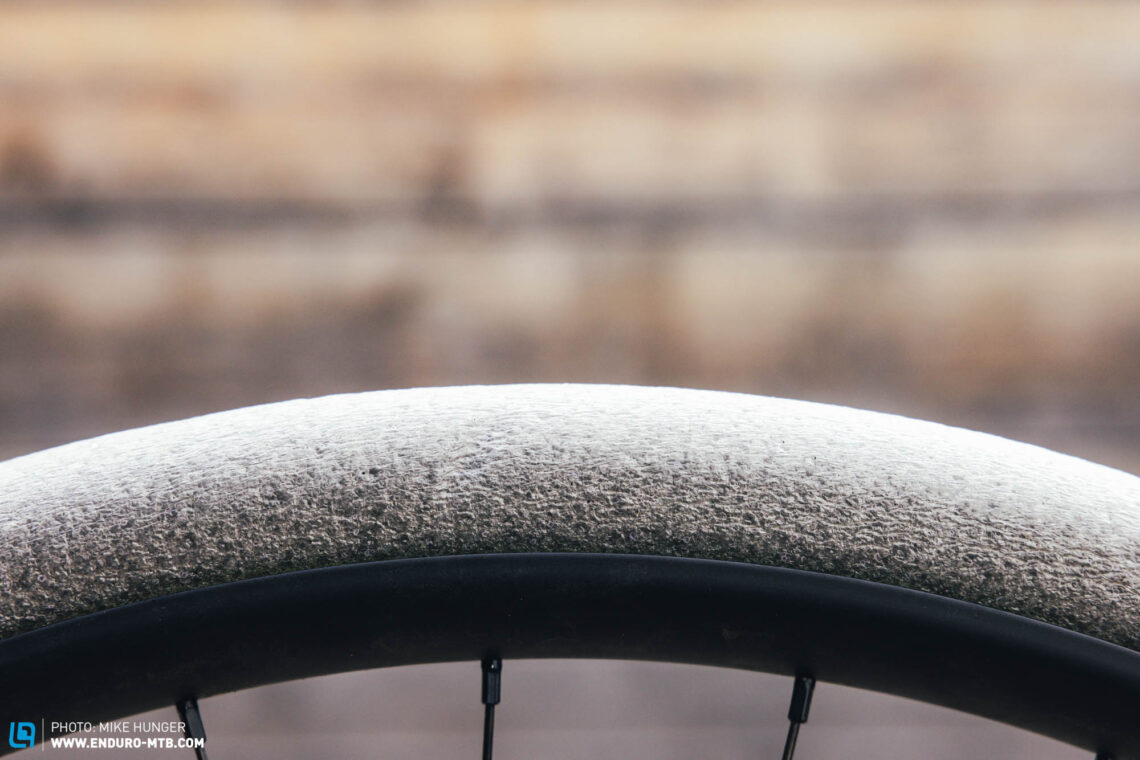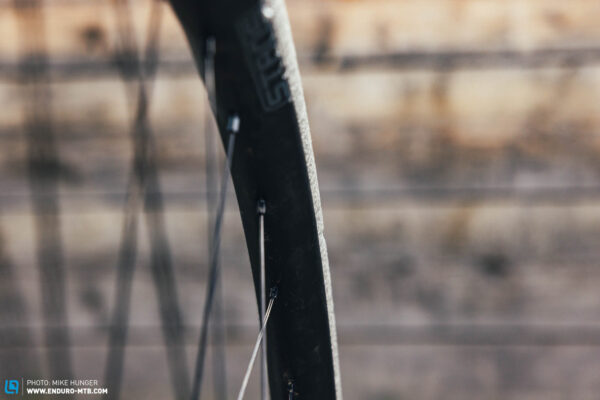Hardware shop backer rod – In our big 2023 tire insert comparison test
At first glance, tire inserts look like an overpriced foam sausage. That’s why we decided to include a bog-standard, hardware shop backer rod in our tire insert group test. At € 14 for both wheels, it’s remarkably cheaper than any other tire insert in this test, but can it hold its own against the competition?

Impact Protection no | Price € 14.04
Every respectable mountain forum has a thread about tire inserts, and every respectable tire insert thread has at least one “expert” that swears by the outstanding impact protection properties of backer rods. However, we’re always a little wary of Internet myths, so we headed straight to our local DIY store to buy a few lengths of 40 mm backer rods – unfortunately we couldn’t get hold of thicker ones! Unlike pipe insulation tubes, which are also made of Polyethylene, backer rods don’t have a hole in the middle. Since our hardware shop didn’t sell them by the metre, we connected two one-metre rods (per tire) using zip ties. At € 14 for the lot, this is by far the cheapest setup in this test and, at 82 g for both wheels, also the lightest solution. During our lab tests, however, it became quickly clear that the light, low-density material doesn’t offer any additional protection against impacts. Not a good start for our DIY inserts!
Installing our DIY backer rod tire inserts.
Installing our backer rod inserts was easier than with any other insert in this test. First off, at 40 mm, the foam rod is significantly narrower than the other candidates, and on top of that, the soft, light material is extremely stretchable, making it easy to pull your makeshift tire insert onto the rim and the tire over the insert. All in all, it’s almost like fitting a tire without an insert.


The backer rod tire insert on the trail
As far as ride feeling goes, the backer rod insert has nothing to do with any of the tire inserts we tested, and that’s despite the fact that all candidates were tested with exactly the same tire pressure. In a nutshell, it doesn’t dampen impacts, and passes on vibrations more directly to the rider. Moreover, the tires generate noticeably less traction, resulting in vague, less composed handling in fast, rough trail sections. With big impacts and strong compressions, you can feel the tire folding under the rim, providing even less predictable handling. As a result, our backer rod noodle struggles to match the performance of inserts that were designed specifically for this purpose.
Conclusion
While a DIY backer rod tire insert might look like a cheaper, lighter alternative to a tire insert, it brings no advantages whatsoever, neither in the lab nor on the trail. In a nutshell, it doesn’t offer any protection against punctures or impacts, and doesn’t improve the handling of the bike either. As a result, it can’t keep up with any of the real tire inserts in this test.
Tops
- A bargain!
- Very light
Flops
- Provides no protection whatsoever
- Doesn’t improve trail performance
For an overview of the group test: The best tire inserts – 5 variants in review
All inserts in test: Hardware shop Backer rod | CushCore PRO (Click for review) | PTN R-Evolution (Click for review) | Rimpact PRO V2 (Click for review) | Technomousse Red Poison Evo (Click for review)
